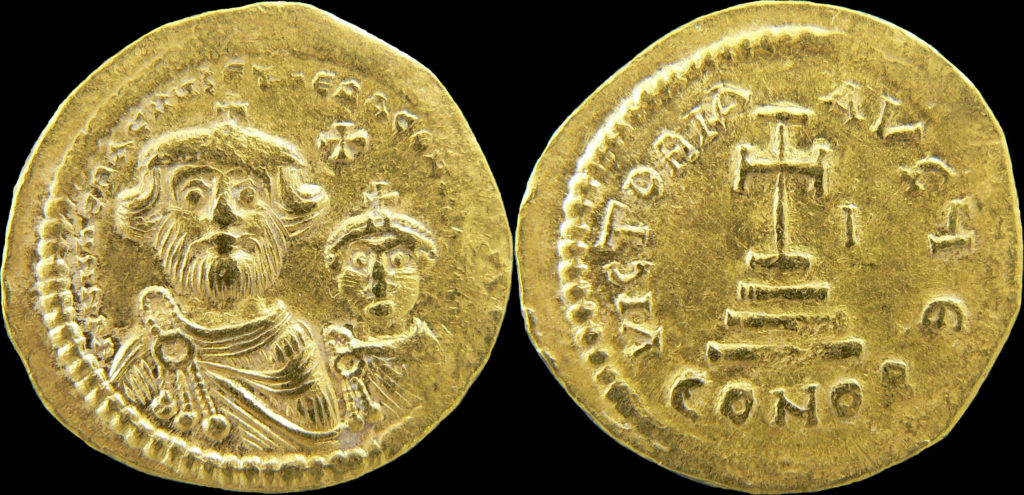
Every week, senior Katie Hillery ducks into Mossey Library to research and catalog some of the college’s lesser-known resources: the Alwin C. Carus Coin Collection, the Brauer coin collection, and the Gleeson coin collection. Altogether, the three collections consist of more than 2,000 coins, yet Hillery said few students are aware of their existence.
As the student coordinator for the coin collections, Hillery’s job is to help coordinate coin exhibits and catalog and research each coin for the online databases where each of the collections is documented. Though she is the official coordinator for the Carus collection, Hillery also works with the Brauer and Gleeson collections.
Before a coin is publicly displayed in the online database, Hillery must research the historical context of the coin and its features and prepare an image of the coin.
“It starts with historical research,” Hillery said. “I find that part really interesting as a history major. Say, if there’s a Greek coin from fifth-century Athens, I’ll do some research to set the coin in its historical background, and actually try to describe a little bit what’s on the coin. If there’s a god or goddess, I try to identify that so people get the whole picture of what kind of coin they’re looking at. So there’s the brief description, and then some measurements like weight and diameter, the picture itself, and then the catalog numbers.”
Sometimes, this process can be very technical and specific for certain coins, and requires knowledge about how inscriptions are oriented and which side of the coin is the front or back. Other coins are difficult to research because the countries that made them no longer exist.
“Numismatics, the study of coins, can be very technical,” Public Service Librarian and former Carus coin collection coordinator Brenna Wade said. “Different types of coins have different reference books.”
Though the title of collection coordinator has passed hands many times, Hillery is the first student coordinator. She began her official role as coordinator in September after working with the collection as a student employee. She said the work was a natural fit for her interests as a history major and classics minor.
“I love this work because for me, it brings to life what I’m studying,” Hillery said. “My primary research interest is classical art history, so dealing with so many coins and seeing the way they were crafted and the way they reflect the social and political climate of the day, I think is really interesting. To be able to have contact on a daily basis with objects that can be 1,500 years old — to be surrounded by history every day — that’s what I really like.”
Alwin C. Carus, who donated the Carus collection in 2005, intended the collection to be an educational tool, according to Hillsdale Academy Headmaster Ken Calvert. Unlike many coin collectors, who focus on a specific time period or nation, Carus developed the coin collection as a sample of a broad range of historical time periods for the purpose of educating students about economics. The collection’s currencies include ancient Greek and Islamic coins, coins from Nazi Germany, and modern Canadian and American coins.
“That’s one of the geniuses of the Carus coin collection,” Calvert said. “It has a good representation of coinage from throughout history, and you can really talk about a lot of great subjects related to it.”
Many of the coins are encased in the Heritage Room, while others can be found in a display at the Hillsdale Academy’s library. Professors have incorporated coins into their lectures, and some coins are displayed during Hillsdale’s Free-Market Forums. Calvert will take approximately 40 coins to this year’s forum in Houston, Texas on Oct. 11-14 for participants to examine between sessions.
In addition to their historical, religious, and artistic value, the coins become a physical manifestation of the world’s economic history.
“I think the invention of flexible wealth, portable wealth, transformed human history, moving it away from land and agricultural production to the level at which the average person could become wealthy not based on land or animals but based on coinage,” Calvert said. “This is what created the middle class. It’s what created the possibility of bigger and better things for everybody. This is what Alwin Carus understood about the history of money and coinage, and this is what he wanted Hillsdale College to share.”
Though many of the coins still require cataloging and further research, the college’s coin collections continue to grow, Calvert said.
“We’ve had others give more coins to the collection, and there are others who have talked about giving their collections, so we’re looking at the possibility of growing this collection quite dramatically in the coming decades,” Calvert said. “Mr. Carus has started something here that I think can be made into a real jewel in the crown of Hillsdale College, to have this great coin collection as part of our library.”

